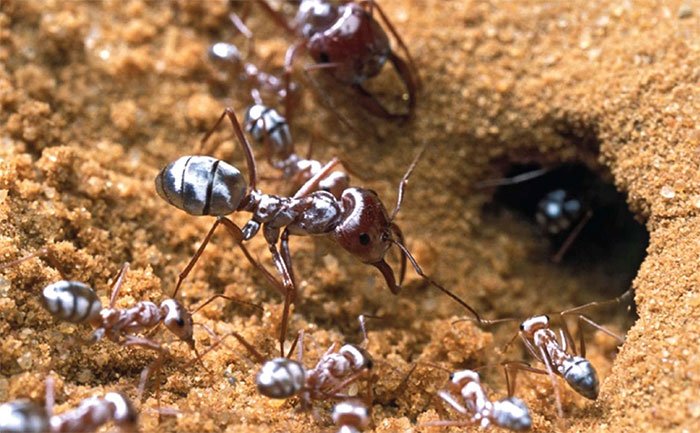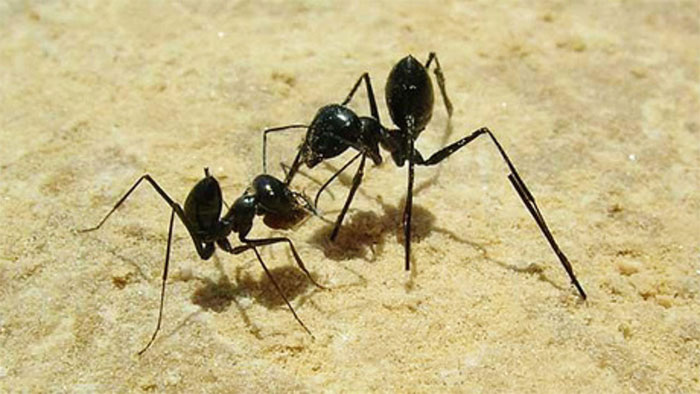Fact you probably didn't know: Ants about their nests by counting their steps
Have you ever wondered how ants can return to its nest without getting lost? Why do ants usually move in a straight line without having to cross or turn to any other side in their path?
Researchers at Ulm University conducted an experiment with a fairly high level of 'detail, care, and meticulousness' , thus drawing the conclusion that ants have adopted the 'counting' method. the number of steps' to leave the nest and return without getting lost , through a cell in their brain that acts as an extremely effective 'measuring device' .
How do ants not get lost in the nest?

Most ants leave a 'mark' on the distance they pass.
Most ants leave a 'sign' on the way they pass so that other ants can use it to move when leaving the nest and returning. They use scents or secretions from the 'tear glands / sweat glands' throughout the body to 'mark' every path they pass, and the same 'glands' contain senses. so that they and their ants and their nests can move everywhere without worrying about getting lost.
However, this only works for species of 'house ants' or forest species. For ants living in arid desert , the above method cannot be applied because the sand does not have the effect of 'keeping the smell', if the secretion is volatile, the wind will smell quickly. scattered.
So, how do ants live in the desert to 'locate'?
Ants determine the direction through the 'natural gift' that has been proven, but how can they ' accurately ' count the number of steps they can take to follow their nest's instructions?

Ants have the ability to count steps to return to their right nest.
The researchers conducted an experiment on a group of ants they encountered moving in rows on a desert path. When they are eating, they trap them and separate them into 3 groups:
- Group 1: Do nothing (normal feet)
- Group 2: Use super glue to 'glue' on their legs hard bristles, easily understood as stilts on ant legs (longer legs)
- Group 3: Cut off the legs (shorter legs)
Group ants after eating, then continue the journey to the nest.
Results obtained for 'ability to measure feet'
- Group 1 (normal foot): Go back to the correct position and enter
- Group 2 (longer legs - stilts): Go over the nest position, stop and look around to find their nest
- Group 3 (shorter legs - clipped legs): A little more missing is to come to the nest, stop and look for their nests
Based on the above experiment, we can conclude that all 3 groups of ants walked the exact number of steps when leaving the nest to return to the nest, but for groups 2 and 3 (the legs were affected causing the foot length changed), they can't immediately return to their nest. This is because when the foot length is changed, the 'stride' will be longer (group 2) or shorter (group 3) -> The distance will be changed (due to the stride change) -> 'Counting' footsteps no longer work.
Through the experiment, we can conclude that ants really have the ability to "count the steps" to return to their nest position , besides that is also known as 'pre-fixed and fixed'. sometimes has its drawbacks.
- Strange things about the ant world
- Simple tips to help chase ants
- Air conditioning system in ant nest
- This is what happens when an ant bites you, no wonder it hurts so much
- Discover strange ants in the world
- Is 'rational' than a person?
- Ant likes urban life
- Remember the smell of the enemy
- Why counting sheep helps to sleep fast?
- Discover the key to the social status of ants
- Why ants 'dominate' the world
- Why do the ants go back and forth to the nest, how did they do it?
 Why do potatoes have eyes?
Why do potatoes have eyes? 'Tragedy' the world's largest carnivorous life: Death becomes ... public toilet
'Tragedy' the world's largest carnivorous life: Death becomes ... public toilet Tomatoes were once considered 'poisonous' for 200 years
Tomatoes were once considered 'poisonous' for 200 years Detecting microscopic parasites on human face
Detecting microscopic parasites on human face Which insect is the smartest?
Which insect is the smartest?  Scientists discover how desert ants navigate
Scientists discover how desert ants navigate  What if ants were the size of elephants?
What if ants were the size of elephants?  Why do many scientists believe that ants are the most perfectly evolved creatures on Earth?
Why do many scientists believe that ants are the most perfectly evolved creatures on Earth?  People study ants to write algorithms
People study ants to write algorithms  Scientists discover the first species of mouse that can grow crops
Scientists discover the first species of mouse that can grow crops 